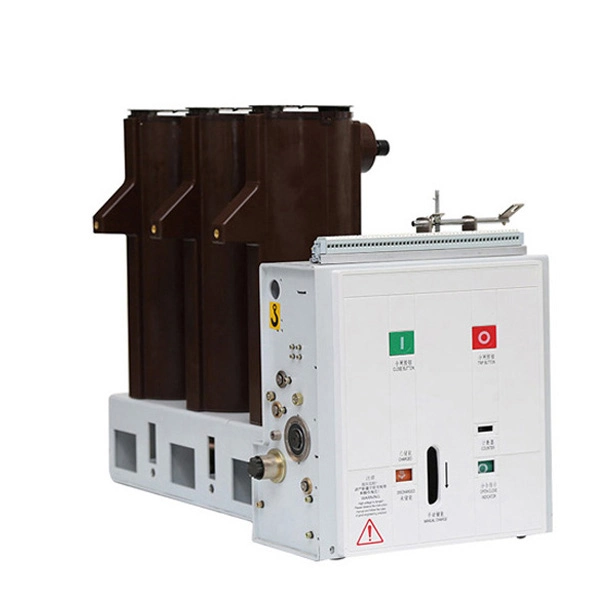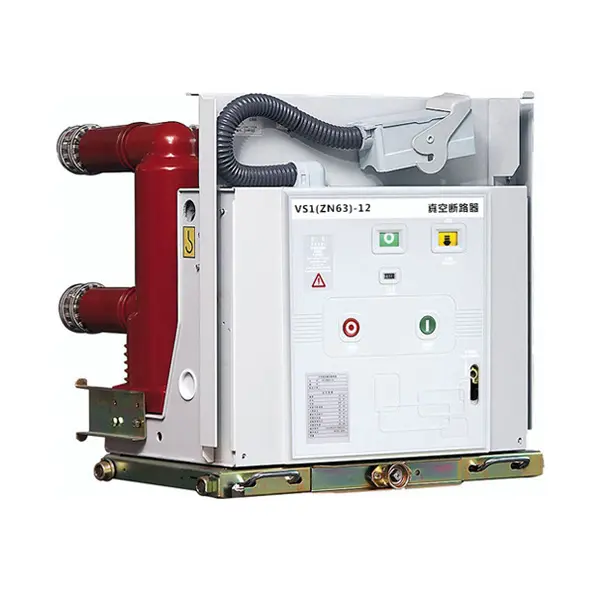Where is VCB used?
The medium voltage application range for VCBs lies in between 3.3 kV to 36 kV. At some places they could be applied at HT level. The common application fields are:
Power generation stations: Controlling and protecting generator circuits
Transmission and distribution substations: both at sub-transmission and also at distribution levels.
Industrial plants: Protect motors, transformers, and other equipment from overcurrent and short-circuits.
Railway electrification: For switching and protection of the railway system.
Commercial buildings: For medium-voltage power distribution.
What is the difference between SF6 and Vacuum Circuit Breakers?
SF6 Circuit Breaker:
Medium: Makes use of Sulfur Hexafluoride gas as the arc-quenching medium.
Voltage Range: Normally used in high-voltage applications, often above 36 kV.
Arc Quenching: SF6 is one of the best gases where it can absorb electrons, allows insulation, and quench arcs.
Switching Characteristics: It gives highly efficient arc extinction without much loss in energy.
Maintenance: It requires more maintenance as compared to VCBs as it makes use of gas SF6, which should be dealt in a proper way as it is a greenhouse gas.
Environmental Impact: SF6 is a super greenhouse gas that can pose hazardous environmental aspects if leakage occurs.
Vacuum Circuit Breaker (VCB):
Medium: Uses a vacuum as the arc-quenching medium.
Voltage Range: Mostly used in medium-voltage systems, up to 36 kV.
Arc Quenching: Arc is quenched in a vacuum; ionization and recombination occur rapidly within the arc, thus extinguishing it.
Switching Character: Specifically suited for repeated operation with a good breaking capacity.
Maintenance: Less maintenance, compared to SF 6 breakers, due to totally sealed vacuum chambers with no handling problems due to gas.
Environmental Impact: Eco-friendly, no harmful gases involved.
What is the reason for VCB in HT side?
VCBs are widely used in HT side, especially for medium voltage applications, due to high reliability and negligible maintenance requirement with environmental advantage. Some of the reasons are:
High reliability: Insulator of the vacuum interrupter has excellent insulating properties coupled with a very high dielectric strength and gives excellent extinguishing characteristic for the arc.
Long life: VCBs have the maximum operating life as compared to other circuit breakers. They have very low maintenance due to the vacuum chamber.
It does not require gas handling: VCB does not contain greenhouse gases, unlike SF6 circuit breakers. Hence, the percentage is much environment-friendly.
Frequent operation: VCBs can remain a solution for frequent operations without much wear and tear. Thus, they are suited especially for areas wherein switching occurs repeatedly.
Quick arc extinction: The vacuum provides a clean, fast arc extinction with minimum loss of energy and is good for HT switching purposes in industrial as well as power systems.
VCBs are used for medium-voltage applications of HT because these striate a trade-off among the performance, reliability as well as environmental safety.
Summary
VCBs and SF6 Circuit Breakers are widely used devices having wide applications; VCBs are well suited for medium-voltage applications mainly due to high reliability of switching, low requirements of maintenance, and environmentally benign character of VCBs so they are very suitable for multiple operations. SF6 breakers are the preferred choice for high-voltage applications mainly due to superior arc quenching performance but require careful handling of SF6 gas to avoid affecting the environment. The VCBs are highly favored on the HT side due to quick arc extinction, long life, and no gas management; they are very essential for the protection of industrial and power systems.


